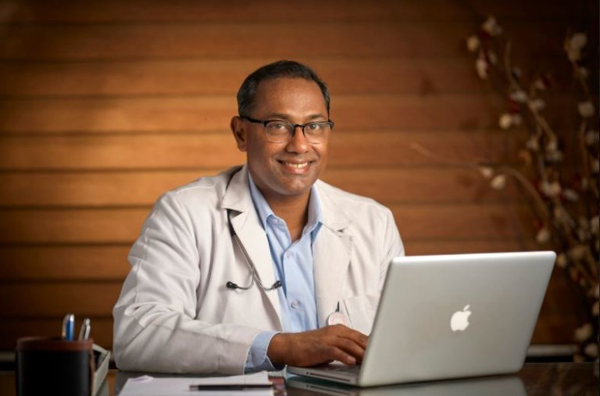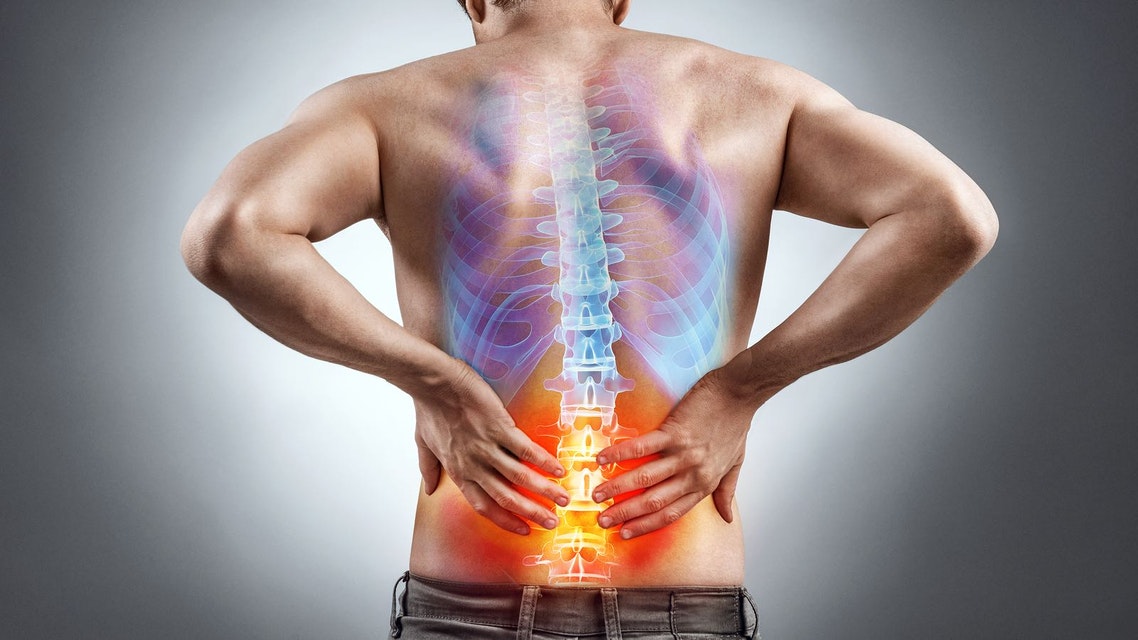A very common problem with the modern world is the over reliance on Magnetic resonance imaging without proper clinical interpretation. MR imaging of slipped discs are classified as disc bulge, prolapse, protrusion, extrusion, sequestration but does not thoroughly interpret the disc movements and their impact on a dynamic spine (moving spine). A slipped disc also ruptures which can cause the pulpy gelly material within the disc to extrude and cause nerve root compression and inflammation (sciatica) leg pain. Most acute disc puncture (rupture) episodes get better as the inflammation settle and there is a chance of extruded fragment shrinking and getting absorbed.
INTEGRATED
SPINE CARE (ISC)
ISC is the culmination of my experience in conventional spine surgery, and in the traditional ayurvedic personal approach to every patient.
As an orthopedic surgeon I had confidence in my skills as a surgeon. I gathered experience in the surgical treatment of spinal conditions involving degenerative spine diseases, spine tumor and degenerative deformities after working in the spine surgery unit of a reputed tertiary teaching hospital exclusively for five years.

I entered into practice prepared to take care of all serious spine diseases equipped to care for patients with back pain, leg pain arm pain, and neck pain from any spinal condition. Yet in clinical practice I soon felt something was missing, as I saw many patients who could benefit from ayurvedic treatments other than what conventional surgery offered. I have made the conclusion that any good surgeon can operate, better surgeons know when to operate and the best surgeons know when NOT to. Knowing when to operate and when to hold off relies on weighing up relative probabilities of success and failure between alternatives.
Back pain diagnosis and treatment has been made complex by a wide variety of health practitioners from different specialties bringing different view points on the subject. Often patient with spine conditions with back pain, leg pain, arm pain and neck pain waste time consulting many specialists and suffer needless treatments cost them a fortune It is common for a patient to find that trial and error is needed to figure out what treatment works best for his or her situation or whether a combination of treatment is the best approach. Sometimes with sustained or severe back pain, neck pain or leg pain spinal surgery is the best option to get better quicker.
Here we can guide you better on a whole range of unique treatment options including surgical and non surgical.Spine is a strong, yet flexible structure in the human body. It acts as the pivot of the whole body and discs interposed between vertebrae acts as shock absorbers. Its most important function is to protect the spinal cord that runs through even when the whole spinal column moves for day to day activities. The vertebral muscles and tendons work in group to hold the vertebral column upright like a cable net work to control its movements during rest and activity. The spine has four natural curves which help to distribute mechanical stresses as the body moves. The spinal cord is the core of communication system between the brain and the body. The spinal column’s blood supply is through an elaborate system of arteries and vein which helps in nourishing all cells in the vertebrae spinal cord discs nerves, muscles and other related structures.
A great deal of recurring or chronic back pain arises from poor posture. Posture that has developed over many years tends to remain fixed and alters the muscular pattern. This results in tense muscles and may even restrict your breathing. The common problems of spine related to activities of daily living includes disc problems, muscular dysfunction, facet joint arthritis, sacroiliac arthritis and degenerative conditions of spine leading to instability causing neural problems of varying intensity. From my experience these subset of spinal problems which affects majority of population can be very well treated based on Ayurvedic and Marma Principles with a combination of herbal medications and spinal manipulative therapies. The medicines deal with the inflammatory part where as the spinal manipulations take care of the mechanical aspects of spine in correcting malpositioned disc, facet joints involving the whole spine. The advantage of these manipulations in expert hands can give immediate relief from pain and rigidity of spine.

Over the years small facet joints that link the vertebrae get jammed or strained during awkward twist and bend strain causing sever back pain. It can be so severe that it is painful even to breath. All these stages progress sequentially to degeneration leading to conditions known as spondylosis, spondylolysis, spondylo listhesis (slipping of vertebrae) which in turn causes the spinal nerves to get compressed along its course at various vertebral channels and producing corresponding symptoms like pain, numbness, tingling sensations, weakness, loss of bowel / bladder control (urinary dribbling, constipation) of varying degrees. If treated at an earlier stage properly the progression of disc degeneration can be minimized.
As mentioned earlier the philosophy of ayurveda is in recognizing the spine as a whole unit. The present conventional modern (allopathy) treatment consisting of drugs, physical therapies and surgery cannot optimally treat a degenerative spine. Surgical decompression of spinal cord nerve roots followed by stabilization and fusion of certain segments will certainly relieve extreme neurological symptoms but does not fully help in restoring the whole spinal mobility or reducing inflammation of the nerves completely. This is because the micro circulation pores and channels which nourish the spine and its nerves can still be in a diseased condition. Moreover the four natural curves of spine especially the lumbar lordosis has to be maintained for a proper spino pelvic balance in sagittal and coronal plane. Fusing more number of lumbar segments during surgery may later affect the balance of the entire spine causing junctional kyphosis (forward stoop) at thoraco lumbar junction. (Let me add however that surgery is the only way to deal with certain kinds of tumours, infections and fracture of spine causing severe cord compression.)
As far as degenerative conditions of spine which affects majority of the population ayurveda works well in my experience. The following sanskrits words of wisdom were quoted by Susrutha, the “father of Surgery” in his literature as the general principle for treating spine.
"Sandheen chira vimukthamsthu saighdha suvinnan Mrudu krudhan Ukthair vidhaaniar buddhiaja Yadhaswam sthana aanayen Karodhi bandhana”
The underlying meaning is that a wise physician would first make the spine supple, realign its connecting joints and binds up the spine to maintain its natural alignment till it becomes strong and flexible. A unique method has been developed on this principle and from evidence collected at our centre. After staging of the disease, considering patient’s physical constitution he undergoes ‘panchakarma therapy’ which consists of many procedures to affect his whole body and to make the spine supple and improve its nutrition. After a two week course of treatment the spine can be easily manipulated under mild sedation and then his torso is bound along the entire thoraco lumbar spine up to the iliac crest. Special care is used in binding in order to maintain lumbar lordosis and to relieve abdominal compression. This binder is maintained for about 30 days during which the spine becomes strong and flexible again. Herbal concoctions (kashayam) are given meanwhile to relieve inflammation of nerves during this period.
After the 30 days period the corset is released. Some basic spinal exercises with practice of yoga and activity modifications will prevent the conditions from recurring. If at all it recurs the whole range of treatment which you have undergone helps you to prepare yourself better before planning surgery. It is always better to exhaust all options of conservative treatment before considering a surgery in degenerative spine
For spine related enquiries please contact:
Dr.Sunil Paul Parathuvayalil – M.B.B.S,MS(Ortho)
Phone: +91 9847560321
Mail: drsunilpaul77@gmail.com






